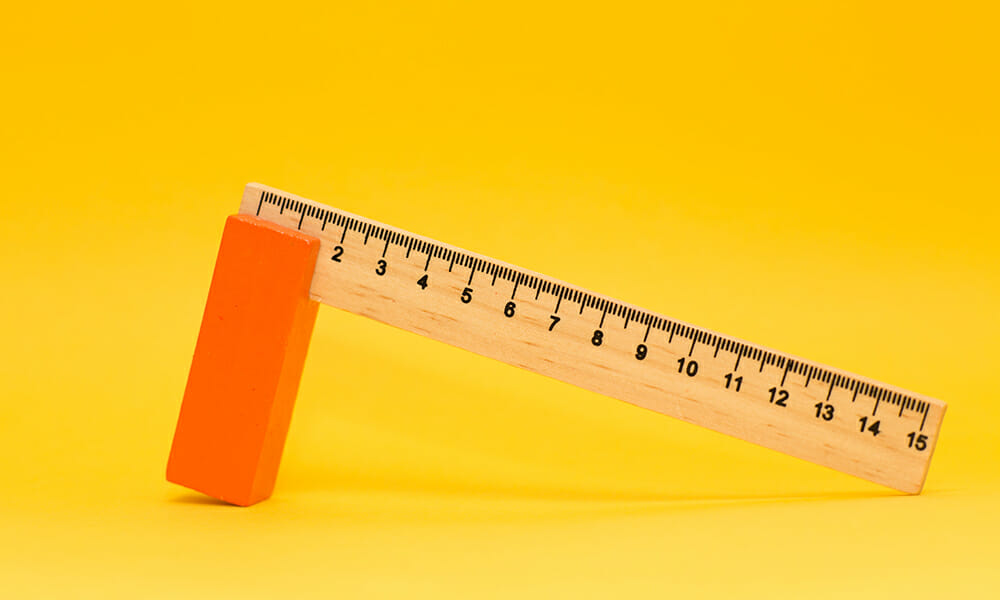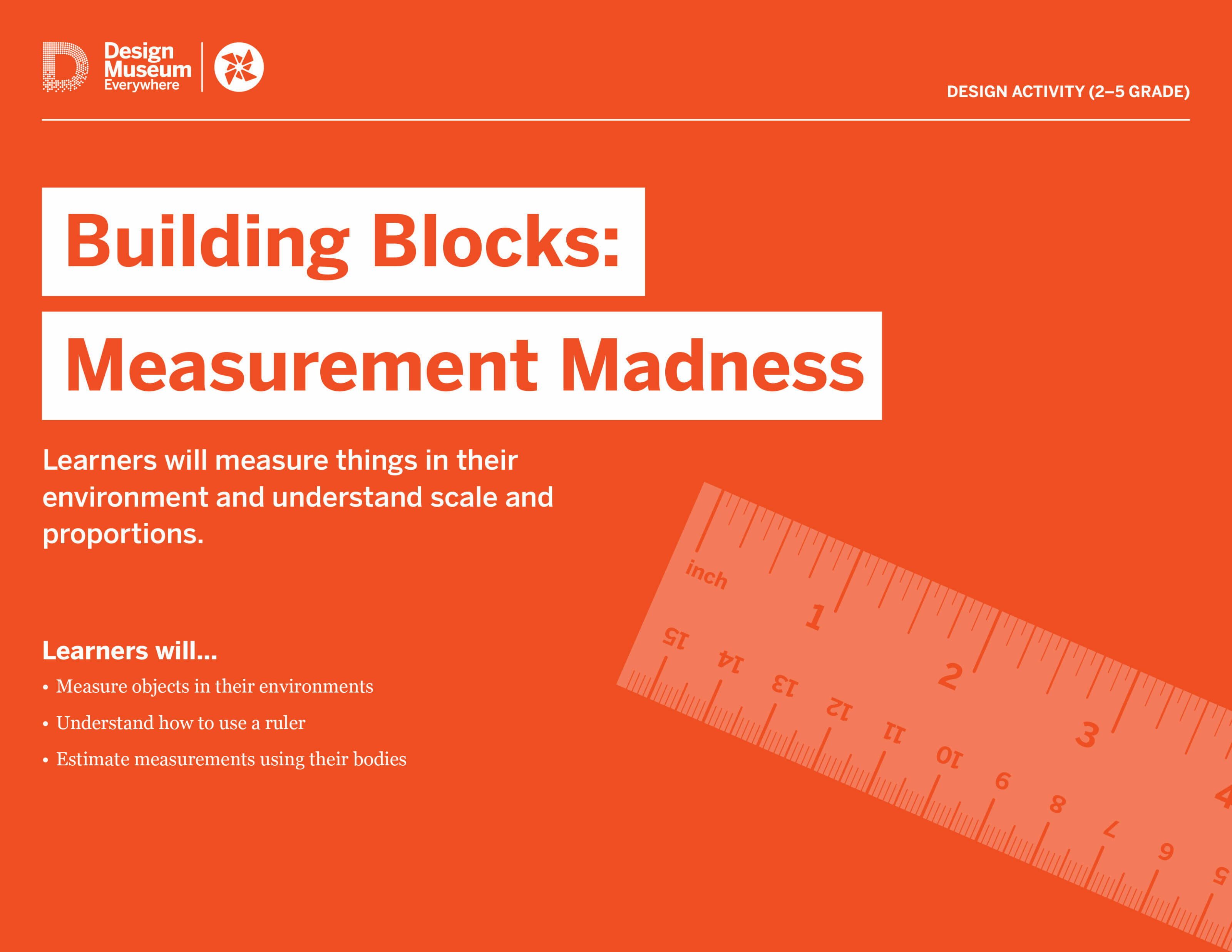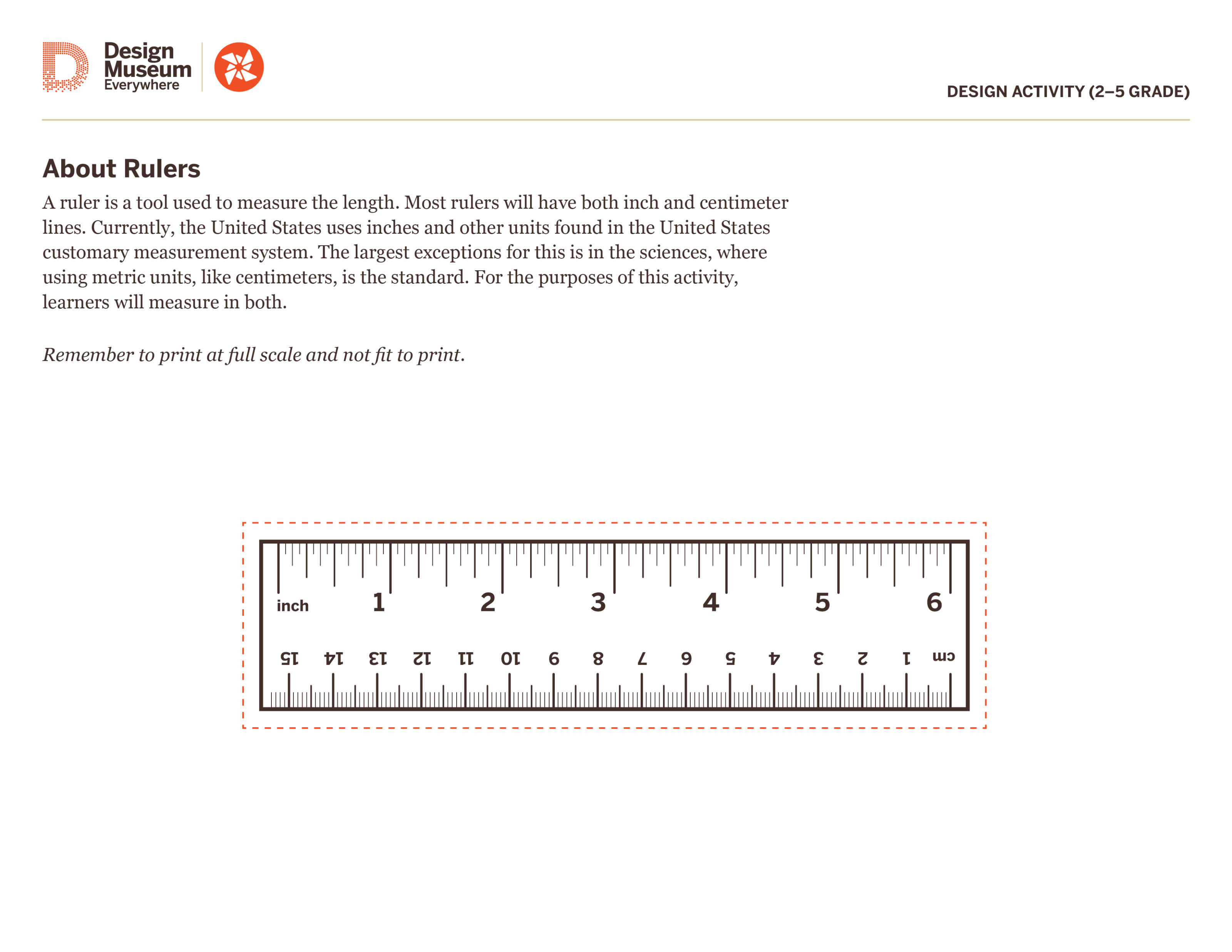Building Blocks: Measurement Madness
Design Activity (2-5 Grade)
Learners will measure things in their environment and understand scale and proportions.

Learners will…
-
Measure objects in their environments
-
Understand how to use a ruler
-
Estimate measurements using their bodies
Share your favorite measurement findings on social media with #DesignTogether and we’ll feature examples in our Design Together online gallery.
INSTRUCTIONS
-
Before starting, gather some starting materials: a ruler (click here to download a 6 inch printable ruler), a piece of paper, a pencil, and a writing surface (clipboard, book, folder, etc.).
-
If your learner has never used a ruler, walk them through how to measure something. Be sure to remind them what side of the ruler they should begin measuring from. Feel free to mark the starting side with a colored marker or pen.
Guiding questions: How do we know how long something is? Looking at this ruler, what side of the ruler do you think we start measuring from? Why? How would you measure something that’s longer than the ruler? -
Provide your learner with their first object to measure. Choose something flat with clean edges like a book or magazine. Ask your learner to measure the length of the object and record their answer on a piece of paper. Encourage your learner to measure in both inches and centimeters.
-
Once they are comfortable with how to use the ruler and record their findings, the challenge can begin! Challenge your learner to find items in their environment that they can measure in one inch increments.
For example: find an item that is one inch, two inches, three inches, four inches, etc to the length of their rulers -
Once they’ve collected their measurements, have your learners measure the same items in centimeters to explore the relationship between the two. Older learners can be guided into thinking about the ratio between the two.
-
Now that they can measure smaller objects with a ruler, ask your learner to measure a part of their body they can easily use to measure other items, like a hand, foot, or forearm. Once they know the measurement, ask them to guesstimate the size of larger things around their environments, like chair heights, bookcases, beds, etc, using their new tool.

